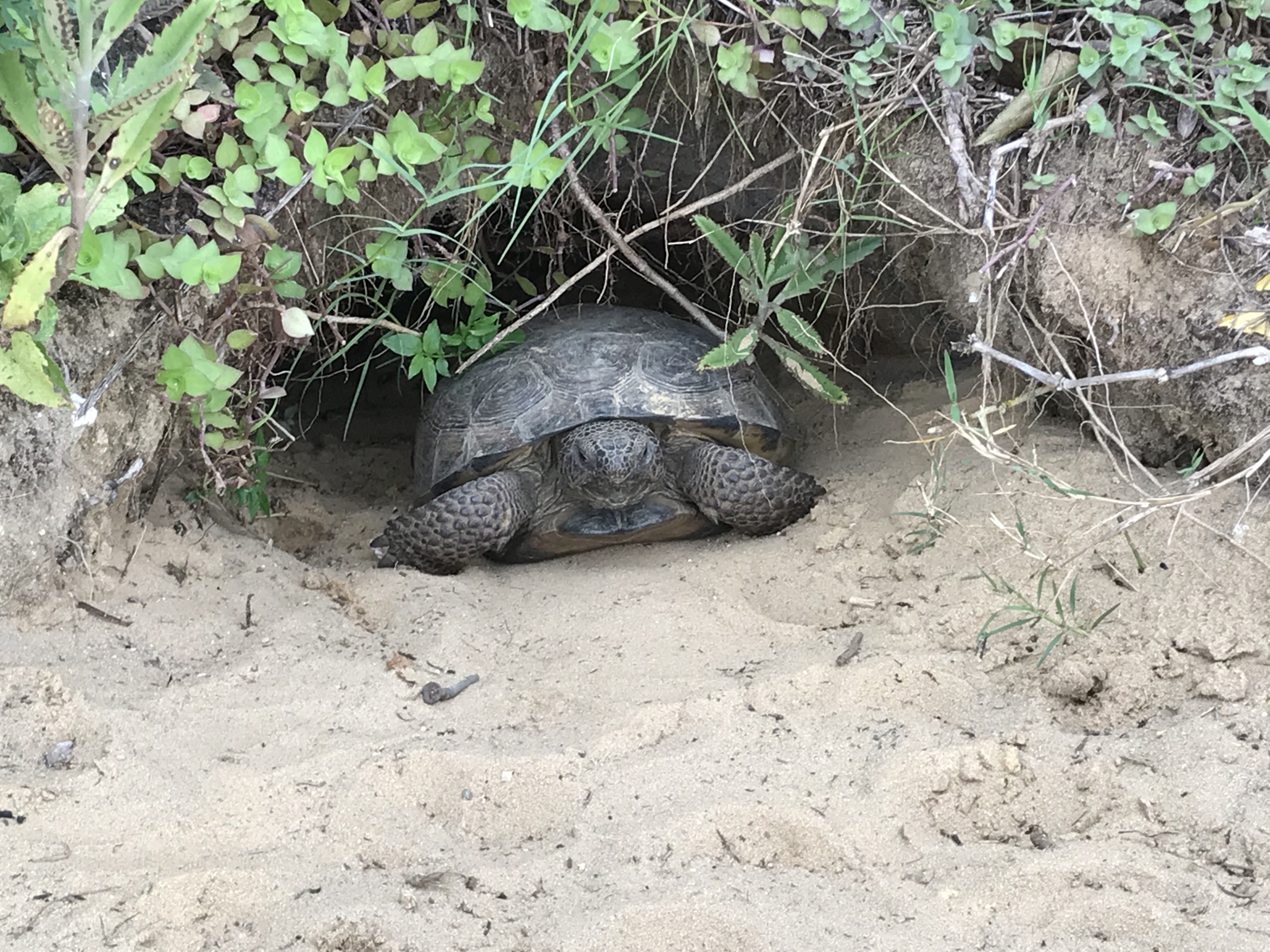
Gopher Tortoise in Burrow Entrance. Photo credit: James Lyon/USFWS
The U.S. Fish and Wildlife Service (FWS) recently determined that populations of the gopher tortoise in the southeastern United States are stable or expanding in most of its range and is no longer a candidate for listing as threatened under the Endangered Species Act (ESA). Both private and public forestlands certified to the Sustainable Forestry Initiative® (SFI) are playing a key role in the recovery of the tortoise.
The gopher tortoise, the only member of the tortoise family east of the Mississippi River, lives primarily in forests, as well as savannahs, grasslands, and scrub coastal habitats throughout Florida, southern Georgia, and portions of southern South Carolina, Alabama, Mississippi, and eastern Louisiana. They excavate burrows up to 12 feet deep that provide shelter from wildfire, predators, winter cold, and summer heat. Gopher tortoises can live to be 50 to 80 years old, and can grow to be up to 15 inches long and weigh from eight to 15 pounds. They are primarily herbivores, but sometimes eat insects and carrion.
In 1987, the FWS listed the gopher tortoise as threatened under the ESA in the western portion of its range, in portions of Alabama, Mississippi, and Louisiana. In 2011, the agency determined that the gopher tortoise warranted listing as a threatened species in the eastern portion of its range, where the vast majority of tortoises live, but the agency opted not to list the species there because it had higher priorities for listing other species. With the recent FWS decision, the species is no longer a candidate for listing in the eastern portion of its range; it remains listed as threatened in the western portion of its range.
The main threats to the gopher tortoise are habitat fragmentation and the destruction and modification of its habitat, including though development and urbanization. However, about 80 percent of potential gopher tortoise habitat is on privately managed forest lands. In a October 12 Federal Register notice, the FWS noted that “many larger private working forests … accomplish conservation within a broad network of collaboration with Federal, State, and local government agencies, universities, and nongovernmental organizations. For example, forest landowners may create and maintain areas of open pine conditions, conduct gopher tortoise burrow surveys, conduct research, and implement BMPs [best management practices] that benefit the gopher tortoise.”
The SFI Forest Management Standard requires SFI certificate holders to manage wildlife habitat to conserve biological diversity. According to the FWS, forest certification standards such as SFI “likely provides a benefit to maintaining suitable gopher tortoise habitat in private working forests.”
The FWS estimates that 13.7 million acres (5.5 million hectares) within the gopher tortoise’s range are certified through SFI.
The SFI 2022 Forest Management Standard includes requirements to protect water quality, biodiversity, wildlife habitat, species at risk, and forests with exceptional conservation value. SFI-certified organizations must continually evaluate habitat and biodiversity impacts from forest activities. SFI‑certified organizations also must also support research through funding and on-the-ground conservation, community, and education projects involving partners including government, conservation, academia, local communities, research organizations, and others.
